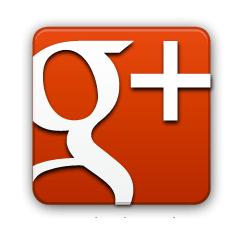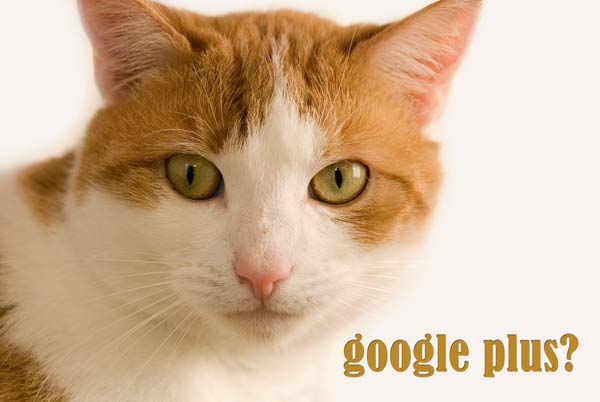…for people who write content on the web, there is another benefit to having a Google+ account, and that is to set up ‘rel=author’- and gain author rank and authority.
Why Does Google+ Exist At All?
It’s a fair question. After all, there’s Facebook – so why would Google want to go chasing the same social media space?
Google+ is still viewed by some as the new kid on the block, and there have been constant rumours that it is failing and that it’s a social media ghost town.
That’s simply not true; there are millions of regular users.
 Nonetheless, it’s a pretty safe bet that Google set up some features of Google+ in response to Facebook.
Nonetheless, it’s a pretty safe bet that Google set up some features of Google+ in response to Facebook.
With Google+ you can post, share, and +1 a post or a comment. Giving a +1 is similar to liking a post or a comment on Facebook.
Google+ is also similar to Facebook in the way it is possible to follow or be friends with other people.
The way that Google+ does it is to enable everyone to set up circles. You can put other people in circles – and that means you can follow their posts.
If they put you back in one of their circles, then you are able to interact more and that’s kind of like being friends on Facebook.
So Google+ is a lot like Facebook.
Search Is Still At The Heart Of Google
Remember, though, that ‘search’ is at the heart of Google, and a big part of Google+ is concerned with giving authority to its search results.
One way it does this is through what is known as ‘Author Rank’, and you will see later in this article that Google is not imitating Facebook and creating a new social scene for the sake of it, but rather that it is reinforcing ‘search’.
How Do I Get Started?
The first thing you need is a Gmail email address. You can get one by going to Google and typing in Gmail. That will take you to a page to sign in or create a new account.
This is how Google describes Gmail and Google ‘products’:
Talk, chat, share, schedule, store, organize, collaborate, discover, and create. Use Google products from Gmail to Google+ to YouTube, view your search history, all with one username and password, all backed up all the time and easy to find at (you guessed it) Google.com.
So now you’ve got your Gmail email address, you need to set up a Google+ profile, and Google invites you to do that right from the Gmail page.
Once you’ve signed up to G+, you can create circles in which to put people you want to follow.
Google starts you off with a few suggested circles, and then you might want to make a circle for people who are interested in the things you are interested in – whether it’s snowboarding or photography.
Or you might want to make a circle for the members of an offline group to which you belong.
I made a science circle so I can follow the interesting posts from people who share developments in science. One thread that I joined in on recently was about brown fat – what it does and how it works.
Once you have signed up with G+ and created a few circles, you can start to post to G+. In fact, you can use G+ as your blogging platform, and some people do that and have given up writing on their own blogs.
Or you can link to articles you have written elsewhere, or link to anything you think that others will find interesting.
You can comment on a post; you can re-share a post, and you can engage in a conversation about the post.
So at its simplest, Google+ is an online forum hosted by Google.
Differences Between Google+ and Facebook
Apart from the fact that Google+ is more related to subjects than to people, the biggest difference between Google+ and Facebook is that almost everything on Google+ is indexed by Google and comes up in search results, whereas most things on Facebook are inside their ‘walled garden’.
In other words, you have to be logged in to Facebook and you have to be friends with someone before you can see their content.
Some people make all their info on Facebook completely open and viewable by anyone – but they are the exception.
There are other differences. For example, Facebook ‘throttles’ the information that other people see when you post something.
That means that unless you pay Facebook to promote your posts and put your content in front of everyone with whom you are friends, then only a certain fraction of your friends will ever see it.
Of course, anyone on Facebook could make sure they see certain people’s stuff by promoting them to ‘close friends’ or ‘family’ – but that requires an active step from them as the recipient.
Google+ is set up the other way around. Nothing is throttled unless a recipient actively mutes or blocks certain people.
My Personal Take On G+
The differences between Facebook and G+ are real. I want to give a plug G+ for the quality of the information it’s possible to find and the open way in which it is possible to interact with people.
That’s not to say that there are no similar groups of people on Facebook – it’s just that Facebook is generally built around friends or brands whereas G+ seems to make the process of finding people with mutual interests that much easier and more inviting.
And it seems to me that relating via mutual interests is more like the way that relationships are formed offline, rather than the Facebook way of having to be friends with someone offline before hooking up with them on Facebook.
Author Rank
For people who write content on the web (bloggers, journalists, etc.) there is another benefit to having a Google+ account.
That is, that they can link the articles they write elsewhere on line to their Google+ accounts and then Google will tie the two together and increase that person’s web ‘authority’.
In other words, if a person wrote a well-regarded article on, let’s say, ‘dogs’ – then that high regard will rub off onto other articles that person writes.
So when that person then writes an article on cats and someone searches for an article on cats, Google will be more likely to push the well-regarded author of the article on dogs to the top of the search results for articles on cats.
Authors have to set up what is called the rel=’author’ link between the site on which they write and their Google+ profile, but it’s straightforward to do.
Google+ Pages
The next development by Google on Google+ was that they allowed brands to set up their own pages – similar to Facebook pages.
There are restrictions on how far pages can interact with individual profiles – and the reason for that is to stop brands pushing themselves and their message in front of everyone’s faces.
What this means is that as the owner of a page you can add people and pages to circles – but only those who have already added you (that is, your personal G+ profile) to their circles. In other words, they have to make the first move.
Pages can interact with other Google+ users who are in their circles in much the same way that a Google+ profile owner would.
As an owner of a Google+ page, you can +1, comment on, and re-share people’s posts.
Google+ Communities
Google set up ‘Communities’ fairly recently. The idea behind them is that people with Google+ profiles can come together to explore a shared interest.
It could be a shared interest in snowboarding, in black and white photography, in fountain pens, in atomic physics, in Jane Austen, in Stephen Hawking, or anything at all.
Anyone with a Google+ profile can set up a community.
Communities can be private or public. Anyone can see the content of public communities but only members can post content.
Public communities can be set up as open to anyone to join, or they can be set up to require a moderator to approve before a new member can join.
What communities do is to give structure to posts and conversations about something of common interest to a group of people.
There is some very interesting stuff on a range of subjects on G+ and some very well educated people there who choose to give their time to explain about advances in all kinds of fields – I learn a lot by being there.
Once you have set up your Google+ profile and you are wondering where all the good stuff is, try clicking the buttons in the left sidebar – the Explore button is a good one.
Quillcards On Google+
You’ll see a link in the sidebar to our Google+ page. If you are signed up to G+ and you want to ‘like’ us – click the +1 to show your appreciation. Or click the little G+ button below to show you like this article.
Here’s my personal Google+ profile. Come say hello.
[gravityform id=”2″ name=”How much would you pay for membership?”]
